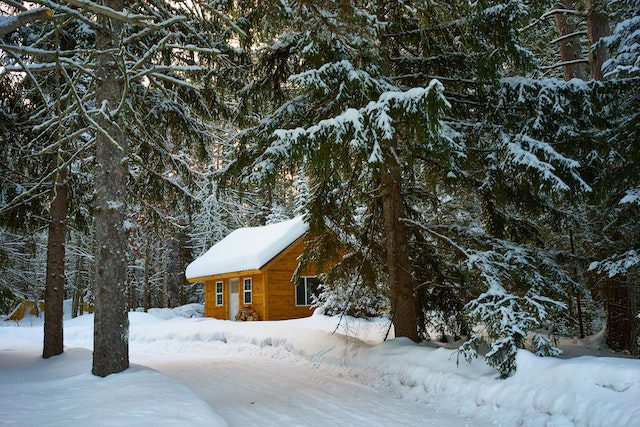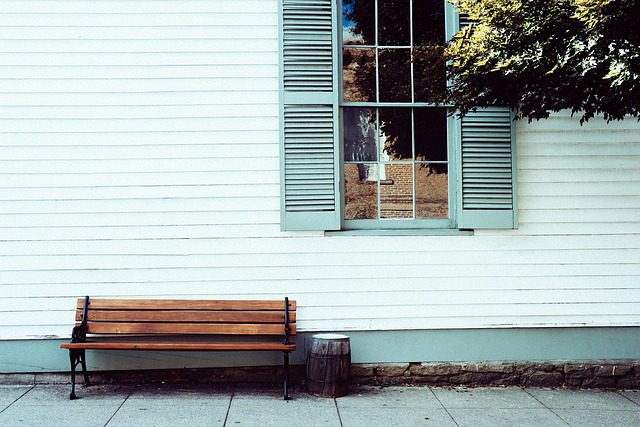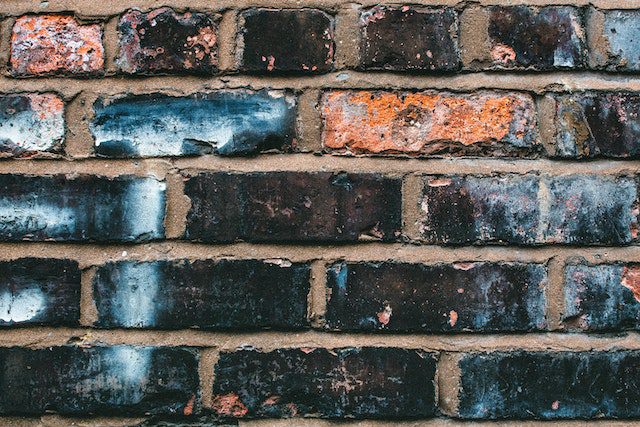
What is the best siding for cold climates? Siding that can withstand the elements is essential to any house's structure. Many property owners are interested in cold-weather siding but unsure which materials to purchase.
Of course, everyone wants their home to appear nice, with the added benefit of having the best siding for cold climates. Which type of siding should you use, then? This homeowner's guide for cool temp siding will help you maintain your home's beauty and value for years to come.

Having siding installed is crucial if you want to keep the cold out of your house. Waterproof siding is essential in colder locations where snow and melting snow can do significant damage to buildings if they find their way inside.
In this sense, the siding functions as a blanket, a protective layer for the inside of the house. Your house retains its comfortable temperature and weatherproof qualities for a very long period!
Homeowners typically think of cold weather first when making a siding selection. It's important to insulate your home properly, and you can do so by selecting the right siding.
The way siding is designed to function any drafts from entering your property. In extremely cold conditions, wide varieties of siding can fracture, and that's why it's critical to pick a solid siding material and invest in home insurance.
Keep in mind that there are benefits and drawbacks to using any siding. We will take a look at the most common available siding materials in the market and the best ones for cold climates.

According to the majority of professionals in the field, every siding option is nearly ideal in its own way. Some side kinds are more prone to major issues, which we will discuss in further detail later.
A properly installed siding is the first step toward ensuring the material's longevity. Siding quality varies with several factors like manufacturer, price, thickness, etc.
Many considerations, including the severity of winter where you live, will determine the type of siding that will serve you best. If you live in an area with mild winters, vinyl or aluminum siding may be your best bet, but stone siding, if properly sealed and maintained, could be an excellent option.
If you live in an area with harsh winters and are looking for an effective kind of insulation, fiber cement siding may be the way to go.
However, in the end, any type of siding will keep the house safe. What constitutes the best siding for hot regions differs from what constitutes the finest siding for cold climates.
| Pros | Cons |
| There's a huge variety of hues, patterns, and sheens to choose from. Simple to maintain Not readily damaged by peeling or chipping, and resistant to temperature changes | The engineered wood product contains binding chemicals that are not sustainable. Cracking of the resin coating is possible. Colors lose their luster with time. |
Engineered wood siding will help keep your home cozy because it is so highly insulated in the winter. Its durability and resistance to water mean that it will serve your building well for many years, even in the winter.
Compared to fiber cement, it's not quite as strong, but it's near. It is a perfect choice because of its impact resistance.
Engineered wood siding may be the answer if you want solid wood's look, feel, and workability without the high price of cedar siding or the low durability of pine.
Multiple varieties of engineered siding are available, such as plywood, and OSB (Oriented Strand Board), found as T1-11 siding panels. T1-11" plywood panels are available in 4x8 sheets and can be put directly over wood framing without outside sheathing.
Plywood is more expensive than OSB, but the two products are otherwise interchangeable in terms of strength and usefulness. While both the plywood and OSB versions of T1-11 are excellent choices, the plywood variant is preferable because of its increased durability and wider range of available finishes.
T1-11 plywood siding is available in both smooth and rough-sawn textures to accommodate a wide range of aesthetic preferences. Extremely adaptable, it can be primed, painted, or stained to resemble real wood.
T1-11 provides a low-cost alternative to more traditional siding materials, making it a popular option for homeowners wishing to replace their old siding or builders looking to cut costs without sacrificing quality.
Meanwhile, oriented strand board (OSB) siding is constructed from wood flakes and strands that have been water-treated with a binding adhesive before being pressed and heated to a high temperature. This product is a popular alternative to plywood because of its low cost, high availability, and high strength, but it does not stand the test of time as, well.
Vinyl siding is rapidly replacing traditional wood siding in American homes because it has a comparable appearance at a lower price and requires less upkeep. When compared to wood panels, vinyl is less prone to warp, splinter, peel, or rot over time.
If you protect your home with vinyl siding, you won't have to stress over storm damage. Vinyl siding can be applied not just to freshly constructed walls but also to those that already have some sort of siding on them.
Vinyl siding's popularity is understandable, given its durability, longevity, low cost, and simplicity of installation. Products that mimic the look of wood-grain lap siding, wood shingles, and even stone are now available, giving you a wide range of options for the siding of your home.
The color is integrated into the substance, and wear and tear are concealed. You only need to clean it regularly with a brush and hose.
Contrary to popular belief, Vinyl siding was developed specifically for its ability to repel water. It won't be the sturdiest option for exterior wall covering, but it will prevent water damage to your home.
Vinyl Siding in Winter
For use in colder climates, you should think about upgrading your vinyl siding to an insulated version. Added insulation can be achieved using insulated vinyl siding, which features a solid rigid foam insulation backing that fills the spaces behind the siding's stepped profile.
Over the years, improvements in vinyl siding's ability to withstand cold temperatures have been made. However, low-quality vinyl siding planks can easily shatter when exposed to freezing temperatures.
Vinyl is widely used in the United States and is particularly popular in cold locations because of its near-waterproof nature; yet, it is visually unappealing and boring.
The low cost and wide availability of vinyl siding make it a top choice for many American homeowners, but it isn't always the ideal option in the harsh winter months. To be clear, this doesn't make it a terrible option; it's just not the best fit for your house.
Vinyl sidings may not be the best choice for homeowners who want to improve the look and durability of their homes in order to increase their resale value.
Thinner vinyl panels may warp or shatter more quickly in high-wind areas, especially during the winter. There have been reports of lower-quality vinyl cracking in severe winds and freezing weather.
Lower-grade vinyl siding planks will become brittle in the excessive cold and can be prone to cracking, but modern coatings have made vinyl siding more resistant to buckling, warping, and cracking in the winter.
Investing in higher-quality, thicker paneling is a good idea if you're going with vinyl siding for a cold region. When combined with the high winds and flying ice or debris that may occur in the winter, this reduces the resilience of your siding and can cause some unpleasant damage.
"Vinyl is a good choice for most cases for the average home. You may not be getting the most high-performing siding, but it stands up well in colder climates and requires minimal maintenance. This makes it a popular choice among contractors here in Goshen, IN. In fact, we buy houses in Goshen, Indiana, precisely because we see the potential that these homes have with a simple upgrade like vinyl siding. If you're looking for a siding option that works well without much upkeep, vinyl might be the perfect choice for you."
Matt Vukovich | President of Matt Buys Indiana Houses
These days, most homes use fiber cement siding, which is a composite material created by combining sand, cement, and cellulose. It costs less than vinyl siding while still looking comparable to wood.
With its high durability and resistance to moisture, fiber cement siding is a popular alternative to wooden sidings in wetter locations. In particular, fiber cement is impervious to water, doesn't swell or expand with the freeze-thaw cycle of winter, and requires little to no upkeep, no matter the season.
This siding is a good compromise; it provides adequate insulation, resists moisture absorption, and doesn't break the bank. Fiber cement siding can be found in a wide variety of colors that go well with various home designs.
Installing fiber cement siding can take more time and money than other siding solutions in rainy conditions. For one thing, it typically necessitates a great deal of time invested by experienced workers, which can quickly add up to prohibitive costs in high-demand times.
Special tools, safety precautions, and installation details are required to get a fiber cement siding job done correctly; it's not a DIY-friendly material. This would mean that you will have to spend a lot on this siding to expect quality performance.
Fiber Cement in winter
The siding's performance in cold weather is middling at best and unacceptable at worst. While fiber cement is resistant to water in large doses, it is nevertheless susceptible to damage from thaw and freeze cycles in the winter (which can occur if the paint and finish have worn down and not been reapplied).
Unlike wood, fiber cement siding won't warp if exposed to water. Also, unlike vinyl, it doesn't break or split when exposed to subzero temperatures.
Fiber cement siding is impervious to even the worst winter weather. It has stood the test of time in some of the coldest winter regions, where it has been installed and tested extensively.
Your durable, low-maintenance siding means never having to worry about scraping or replacing it in the spring. Fiber cement is durable, won't warp or crack, and accepts paint beautifully.
Insulation and fiber cement work well together to keep your home warm and reduce your energy costs. Insulation foam is manufactured by several companies that cater to the needs of homeowners who utilize fiber cement siding.
This makes for a more snug fit and cozier home by preventing air gaps between the siding and the insulation during installation.
Advantages of fiber cement:
Wood siding has always been considered the gold standard for thermal efficiency. It is beautiful and timeless, but it's not always practical in cold climates and may be very costly.
There is a wide selection of wood siding designs to choose from. Board and batten, shakes, shingles, and clapboards are the most typical designs.
The fact that this material absorbs water naturally makes it ideal for use in the winter. If it is maintained, wood siding is an excellent choice for any exterior. Be kind to the wood, and it will be kind to you.
Wood siding in winter

However, it requires a lot of upkeep in damp and cold locations to keep its good looks and functionality long. Maintenance and care must be performed when winter ends to ensure that it will hold up just as well next season.
Winter freezing and temperature variations can cause wood paneling and clapboard to stretch and distort, resulting in cracks, paint loss, and eventually, water damage and rotting.
Wood is frequently used in high-end construction because of its natural, warm look and everlasting charm. Keeping wood siding protected from the elements in colder climates requires a lot of upkeep and effort (such as a durable, water-resistant sealant, for starters).
Check the local zoning and building laws before deciding to clad your home with wood. In some areas, fire-retardant treatments must be applied to wood siding.
Compatibility
Installing several types of wood siding is possible even over previously installed siding. For instance, a new layer of wood shingle siding might be applied atop the existing clapboard.
To further protect your home from air leaks and water damage, you should replace any damaged flashing or trim around windows and doors before putting in new siding.
If you want to avoid costly repairs, you should check your siding for cracks and other damage once a year. Depending on the type of finish, you should refinish wood every four to six years.
Siding made of wood needs to be treated with external paint or stain so that it can withstand the harsh winter weather. The abundance of water in the winter can be disastrous for your siding if it is made of wood, which absorbs water naturally.
Pine and Cedar Siding
Siding made from any kind of wood, regardless of the species, will benefit from a protective treatment in terms of both longevity and aesthetics. All these advantages are yours for the taking if you commit to routine maintenance to ward off moisture, mold, and rot.
If you prefer the look of natural wood grain, you should have your wood siding coated with a clear external finish that offers UV protection. The best defense against weather and UV damage is a coat of paint or a solid color stain.
Pine siding is less expensive than cedar, but it rots easily and attracts insects. Also, cedar doesn't swell, shrink, split, or warp easily, unlike pine.
Siding made of aluminum is impervious to the elements. It can withstand the wind, rain, snow, and other elements with ease.
Aluminum siding, most commonly found in clapboard style, provides all the advantages of vinyl siding and more because it can be painted. Because it does not freeze and break in mild climate conditions, aluminum is a wise financial choice.
Consider this alternative if you're looking for low-maintenance siding that can accommodate a paint job in the future. Should the worst happen and the house catch fire, it won't release any harmful gases.
Aluminum siding in winter
Denting and distorting are common wintertime problems with aluminum metal siding. The aluminum can be bent by projectiles thrown by high, cold winds.
Although aluminum won't break, it can be damaged quite easily. The siding can be damaged by a strong hail storm.
When the wind is really blowing, aluminum siding can also generate a lot of noise. Although there may be solutions to some of these difficulties, aluminum siding's unpleasant noise is one that cannot be avoided.
Aluminum siding isn't the ideal option if you're looking to reduce your heating and cooling bills while also beautifying your property. This shouldn't be too much of a problem because there will be lots of insulation between it and the rest of the house, but it will reduce your energy efficiency moderately.
Aluminum siding, in contrast to vinyl siding, will require periodic repainting to maintain its appearance.
Aluminum siding's color and brilliance may fade in half the time it takes vinyl to fade. Since spot repairs by color matching are out of the question with aluminum, the siding must be replaced in its whole or repainted.
For those who value silence and uninterrupted sleep, aluminum siding can be a major annoyance. The siding will make a variety of loud metal "dinging" sounds as the wind hits it, even in moderate wind.
Aluminum siding expands and contracts with the seasons due to the changes in temperature. Because of this, there may be a slight separation between panels and around the edges.
Rainwater runs from one panel to the next, leaving the wall vulnerable to water damage if a strong wind blows the water up under a panel.

Simply put, homes built out of brick and stone will last a very long time and can withstand the harshest climates. Brick and stone siding, if within the budget, are excellent options for cold-climate homes.
Brick siding is a beautiful insulator in winter since it is both energy efficient and able to store heat from the inside. This siding is also quite sturdy against the wind.
Stone veneer holds up well in damp and chilly environments as a siding material. Stone veneer siding gives off a very natural impression, but it is typically not as durable as actual stone.
Stone veneer may look like the real deal, but in reality, it is just Portland cement, additional natural ingredients (called aggregates), and color. With time, mildew and other problems can develop if moisture is allowed to accumulate in the grout and cracks.
Installing a stone veneer on your home's exterior is a simple way to achieve a stone finish. Stone veneer can be installed on a preexisting concrete surface and used on wood frame walls after a moisture barrier has been installed over the outside sheathing of the frame.
After the installation, the only upkeep is to repair any fractures in the mortar between the stones.
Brick and stone siding in winter
Brick and stone are more expensive, but they insulate well, protect from the elements, and look wonderful. They're extremely resistant to storms and snowfall.
They are ideal for the winter because they don't get too hot and they don't need much upkeep. Keep in mind that brick and stone are permeable; thus, a watertight barrier must be built between the masonry and the building to prevent water damage.
Vinyl, being a plastic, reacts poorly to variations in temperature. Vinyl siding can sometimes crack in extremely cold weather.
But just because winter is coming doesn't mean your siding is doomed. This also doesn't mean that you wanted your money when installing vinyl siding.
The only issue is it is constructed of thin plastic and could break if positioned improperly. Nonetheless, you should not worry.
Assuming the siding is properly installed and of high quality, you should be fine. Vinyl is a great option for siding material due to its benefits.